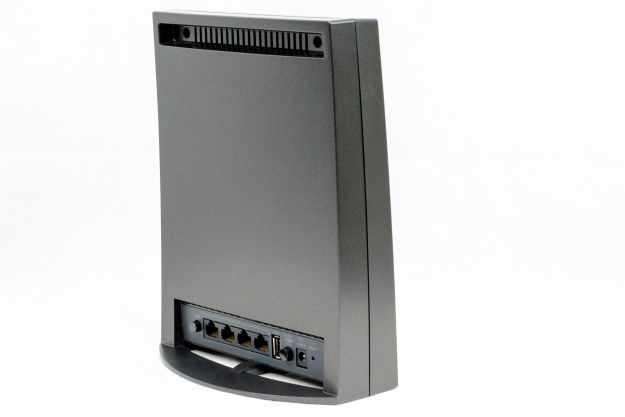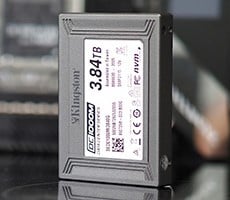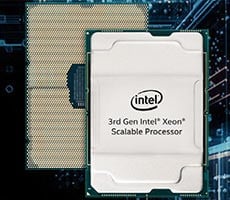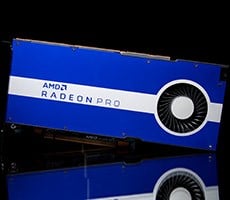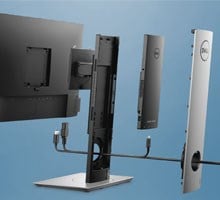Netgear Nighthawk X6S Tri-Band Mesh Extender Review: A Simple Fix for Wi-Fi Woes
Most of us have had a love-hate relationship with wireless networking. It’s a wonderful technology when all your devices remain connected and perform well in every room of your house, but that’s not always the case. When your devices intermittently drop off or can't find a strong enough signal strength for reliable web browsing, or even if you're suffering through endless video buffering, there isn’t much you can do in that moment, but accept you’re at the mercy of your wireless router.
Networking companies sought to fix that with wireless network extenders, but most of those early devices were a messy affair that required separate network names and manually selecting which network to connect to. And even though many of them appeared to boost signal strength, network bandwidth wasn't always very good.In the last couple of years, consumers have been introduced to home mesh networking solutions, like the Netgear Orbi AC3000, which we awarded an Editor’s Choice, but what if you’re stuck with an ISP-supplied router or unwilling to give up your existing one, yet still want to boost your Wi-Fi range and eliminate dead zones?
Netgear’s Nighthawk X6S Tri-band WiFi Range Extender (EX8000) seeks to solve your wireless networking woes by taking the FastLane3 technology that we praised in the Orbi AC3000 and implementing it in a standalone range extender that works seamlessly with any router – even the combo cable modem router that your ISP may have forced you to lease.
|
| WiFi Bands | Simultaneous Tri-Band WiFi - 802.11b/g/n/ac 2.4GHz 400 Mbps + 5GHz 866Mbps + 1733Mbps - Dedicated Backhaul between Nighthawk X6S and router |
| Beamforming | Implicit & Explicit Beamforming for 2.4 & 5GHz bands |
| Ethernet Ports | Gigabit Ethernet: 4 LAN |
| USB Ports | One (1) USB 2.0 port |
| Key Features | Six high-performance antennas with high-powered amplifiers One WiFi Name with Any Router or Modem Router
Smart Roaming connects your mobile devices to the most robust WiFi signal Other Technical Features of Nighthawk X6S
One WiFi Name with Any Router or Modem Router
Smart Roaming connects your mobile devices to the most robust WiFi signal Other Technical Features of Nighthawk X6S
One WiFi name with any router or modem routerSmart Roaming connects your mobile devices to the most robust WiFi signal Beamforming technology boosts range for the 802.11ac MU-MIMO capable for simultaneous data streaming on multiple devices |
| Security | WPA-PSK/WPA2-PSK, WPA/WPA2, Wireless Security: Enable/Disable, WPS fast encryption |
| Processor | Qualcomm 802.11ac chipset with Wi-Fi Self-Organizing Network (SON) technology |
| Memory | 32MB Flash, 512MB RAM |
| Physical Specs | 8.94 x 3.65 x 6.68 in |
| Package Contents | 1 Nighthawk X6S (EX8000), 12V/ 3.5A power adapter, Quick start guide |
| Price | $199 Currently On Amazon |
Unlike previous range extenders, the Netgear Nighthawk X6S (EX8000) doesn’t require a separate SSID from your router. You simply set it up and Smart Roaming technology (802.11k-based) determines which Wi-Fi network to connect to – there’s no manually selecting the range extender or router as you move around your house.
Netgear equips the Nighthawk X6S (EX8000) with three wireless bands – a 400Mbps 2.4GHz, 866Mbps 5GHz, and 1733Mbps 5GHz band – for up to 3000Mbps combined throughput when used as a wired access point. In network extender mode, the 1733Mbps 5GHz band serves as the dedicated quad-channel Fastlane3 wireless backhaul to the main router so your speeds aren’t slower when connected through the extender. Regardless, it has plenty of wireless throughput to match your typical high-end router. Many previous-gen wireless range extenders simply share bandwidth over a single link, which can limit performance. This isn't the case with a dedicated backhaul, which is what consumer mesh networks typically use.
With that said, let’s dive deeper into the hardware and software of the Nighthawk X6S (EX8000).

